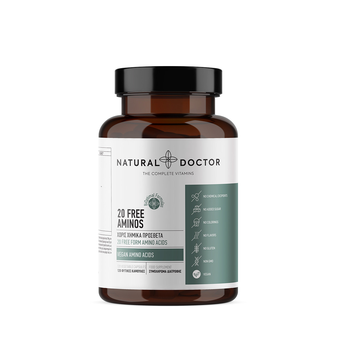Beyond protein: recognizing the signs of amino acid deficiency

Amino acid deficiencies can manifest in various ways and may depend on the deficient amino acid(s).
Here are some signs and symptoms that may indicate an amino acid deficiency:
- Muscle weakness or wasting
- Delayed wound healing
- Fatigue and weakness
- Impaired immune function
- Changes in hair, skin, and nails
- Poor growth and development
- Mood changes and cognitive issues
Free-form amino acids, also known as individual or isolated amino acids, are amino acids that are not bound to other amino acids in peptide chains. In other words, they exist in their singular, unbound form.
These amino acids can be found naturally in protein-containing foods or dietary supplements. The human body has 20 standard amino acids that are the building blocks of proteins.
These include essential amino acids, which cannot be produced by the body and must be obtained from the diet, and non-essential amino acids, which the body can synthesize. Due to their rapid absorption and availability, free-form amino acids are often used in dietary supplements for various purposes.
Unlike whole proteins, which must be broken down into individual amino acids during digestion, free-form amino acids are already in their simplest form. They can be readily absorbed into the bloodstream without requiring digestion.
Amino acids are popular for individuals looking to support muscle recovery, athletic performance, or specific health conditions.
Amino acid deficiency
Amino acid deficiencies can occur in individuals with various dietary, lifestyle, and health factors. While anyone can potentially experience amino acid deficiency if their intake or absorption of protein is inadequate, certain groups may be at higher risk.
Here are some examples of people who might be more prone to amino acid deficiency:
- Individuals with poor dietary habits: Those who consume diets low in protein-rich foods, such as meats, dairy, fish, eggs, legumes, and nuts, may not get enough essential amino acids.
- Athletes and active individuals: People who engage in intense physical activity or endurance exercise may have higher protein requirements to support muscle repair, recovery, and growth. Without adequate protein intake, athletes and fitness enthusiasts may be at risk of amino acid deficiency, especially if they do not consume enough protein before or after workouts.
- Elderly individuals: Aging is associated with changes in muscle mass, appetite, and nutrient absorption, which can increase the risk of protein malnutrition and amino acid deficiency in older adults.
- Individuals with digestive disorders: Conditions that affect digestion, absorption, or utilization of protein, such as celiac disease, inflammatory bowel disease (IBD), gastritis, or pancreatic insufficiency, can impair the body's ability to absorb amino acids from food. As a result, individuals with digestive disorders may be at higher risk of amino acid deficiency.
- Vegetarians and vegans: While plant-based diets can provide adequate protein when properly planned, some essential amino acids may be limited in plant foods compared to animal sources. Vegetarians and vegans may need to pay special attention to consuming various protein sources and complementary plant proteins to ensure they get all the essential amino acids they need.
- Individuals with chronic illnesses or injuries: Certain chronic illnesses, such as cancer, HIV/AIDS, kidney disease, or liver disease, can increase protein requirements due to increased metabolic demand, inflammation, or tissue breakdown. Similarly, recovering from surgery, trauma, or severe burns may have higher protein needs to support wound healing and recovery.
- Infants, children, and pregnant women: During periods of rapid growth and development, such as infancy, childhood, and pregnancy, protein, and amino acid requirements are elevated to support tissue growth, organ development, and fetal growth. Infants, children, and pregnant women may be at risk of amino acid deficiency if their dietary intake is insufficient to meet these increased needs.
It's important to note that while these groups may be at higher risk of amino acid deficiency, anyone can experience deficiency if their dietary intake, absorption, or protein utilization is compromised.



